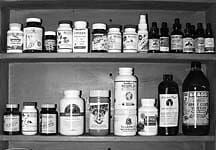Comparing the Best Raw Dog Food Diet Plans
Have you ever noticed that dog owners tend to select one canine expert to follow in the area of dog nutrition and dog food and then another expert for training? And they’ll often adhere to their personal guru’s program no matter what? Is it our unconscious dog-like loyalty, or what? Many of our readers are already preparing their own dog food, and generally, they are following the guidelines of some canine nutrition expert. However, many more of our readers have not yet sorted out the differences between the raw dog food diets being promoted today.
A Variety of Dog Food is the Spice of Life . . .
We would think a pediatrician who recommended a single food diet for a child was bonkers, yet when the veterinarian recommends a single food for our pampered pooch, we obey without question. Yet, feeding a dog is not all that different from feeding a kid. There are numerous reasons why a dog should eat different foods on a regular basis – if not a fresh, ever-changing homemade diet, then at least a rotating commercial diet. We like to think of the production of food, even pet food, as a fairly scientific affair but the truth is, all pet food manufacturers make mistakes in formulation or production that result in nutrient excesses or deficiencies.
How To Read Dog Treat Labels
Most of us just can’t resist giving our beloved canine friends a little snack now and then. Many of us are trained by our dogs to run for the doggie biscuits at the cock of a brow, a whimper and a nudge, otherwise known as “the biscuit shuffle.” I am convinced there is a biscuit “look” that no one can refuse. Treats are fine; after all, we snack between meals! But, just as with our snacks, what treats you choose to give your dog should contribute – not take away from – the overall healthfulness of his diet. There is a huge variety of biscuits on the market in these dog-friendly days, and variety is great for our canine friends, as long as we know which ingredients to seek and which to avoid.
The Best Dog Food Bowls
Consider your dog's dinnerware, a topic more complicated than you might have thought. A visit to your local pet superstore, for example, will reveal dozens of choices, in plastic, stainless steel, glass, nylon, ceramic, and possibly aluminum. Among them are many simple, practical and economical models, meant for long-term everyday use, which are the focus of this article. Of course, bowls also come in a million different specialty" models to feed automatically
Whole Dog Journal’s 1998 Canned Dog Food Review
and disabled." It includes meat that was too high in hormones
Benefits of Vitamin C to Your Dog
For humans, a source of vitamin C in the diet is literally necessary for survival. Early sailors deprived of fresh foods for extended lengths of time often suffered from scurvy
Are Premium Dog Foods Worth It?
Choosing the right food for your dog is an important task, with both short-and long-term consequences. Many veterinarians have come to believe that the best foods for a dog are those that are closest to his ancestral diet: raw meat, in all different cuts and varieties, and a sprinkling of herbal or vegetable matter. But for many of us, providing that kind of diet is inconvenient, time-consuming and expensive. So, for those of us who have gotten used to the ease of feeding dried dog food out of a bag, WDJ can help you become an informed consumer.
The Holistic Dog Food Store
Visit most pet stores especially the large, warehouse-style chain stores and ask for their best" dog food. Chances are good that you will be directed to shelves containing big-name foods that are high-priced
How Many Treats Dogs Should Receive
Opinions vary about how, when, and how many treats dogs should receive, but we’ll leave that to the dog trainers. If getting treats is a regular part of your dog’s routine, whether he gets one or two a day or a whole box each week, your first consideration should be the healthfulness of the treat. Any food that your dog eats regularly – even if it’s in small amounts – should be able to pass the same criteria as his food.
Do Dog Supplements Really Work?
When a specific dietary supplement is given to an individual (canine or human) who previously lacked the nutrients or chemicals offered by the supplement, or whose body required a higher dose than was previously available, miraculous improvements in health, appearance, and attitude can indeed take place. But most people have no idea whether they are lacking something before they add it to their own or their dog’s diet!
A Dog Who Is Always Hungry
We adopted our rescue dog about a year ago. She had been a stray, and at the time we adopted her the vet thought she was about ten months old. Ever since we’ve had her she has had the same symptoms – she doesn’t seem to be able to properly digest her food. She is ravenously hungry all the time. She will eat unlimited amounts of anything – fruits, vegetables, yogurt, bread, anything she can get her paws on. And her stools are not normal; she has about four bowel movements per day, and they get progressively softer throughout the day.
Feeding Your Dog a Raw Diet
For thousands of years, Mother Nature has fed her dogs and cats raw food. Their wild cousins continue to dine on freshly captured prey, but most American dogs and cats eat commercial pet foods from cans and packages or home-cooked grains and meats. The result, say a number of veterinarians and nutritionists, is deteriorating health in our canine companions. In response is a growing trend toward home-prepared diets for our dogs, away from cooked food and toward more natural fare.















